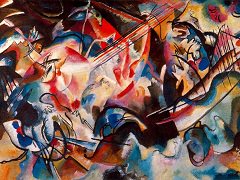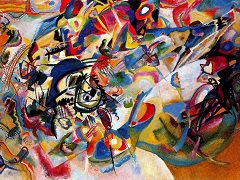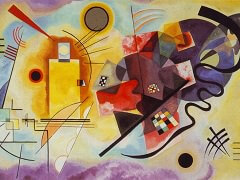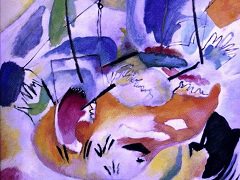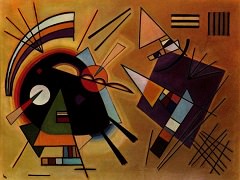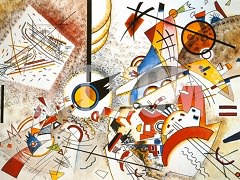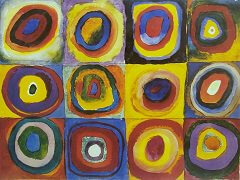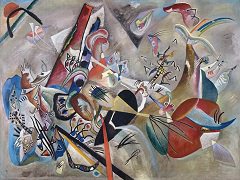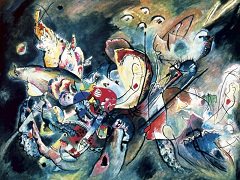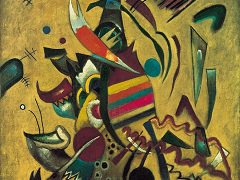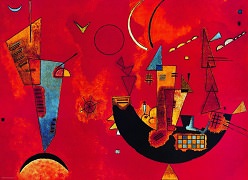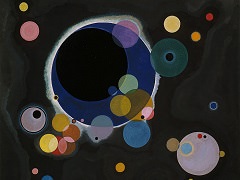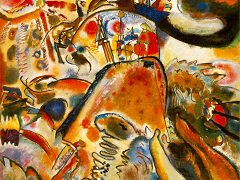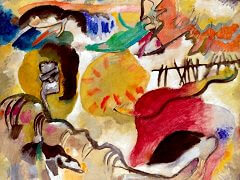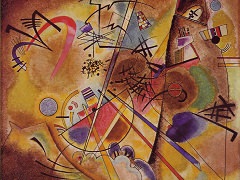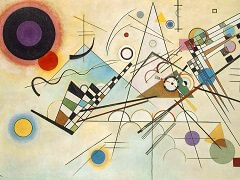Composition with Whitened Forms, 1940 by Wassily Kandinsky
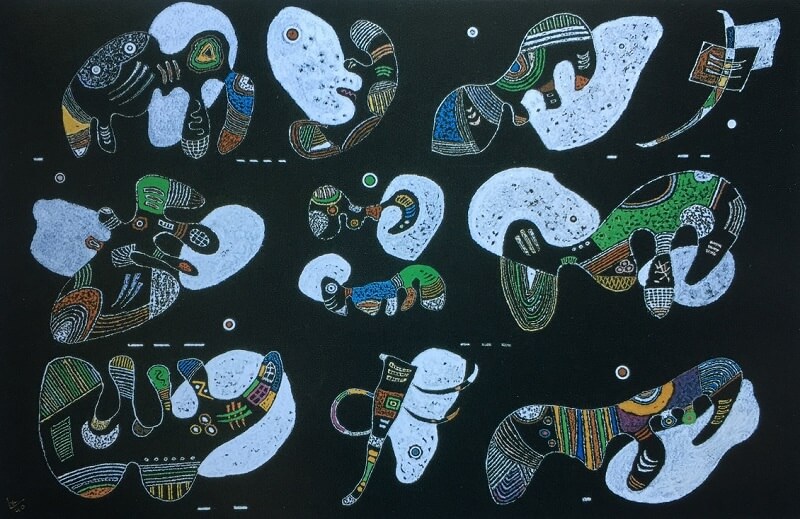
Formerly known as bodycolour, gouache has been around for at least three hundred years in its present form, although its ancestry is in egg tempera, as a water-based paint medium. It differs from the more translucent watercolour with the addition of whitening to render it opaque. This whitening may be a Chinese white (zinc oxide) paint or chalk Gouache or bodycolour was used extensively by J. M, W, Turner (1775-1851) to enhance his watercolours in the eighteenth and nineteenth centuries.
It is possible with this late work by Kandinsky that the paint was available commercially ready-mixed in a tube, using gum arabic as the binding agent. At the time gouache was being used more and more by designers as a fastdrying, opaque medium for promotional artworks. It was also a favoured medium for a number of fine artists in the twentieth century apart from Kandinsky, for instance, Henri Matisse. As you can see from this painting, gouache works very well as a medium against a dark or black ground. The paint already has a depth to its character, which is enhanced on this type of ground.

